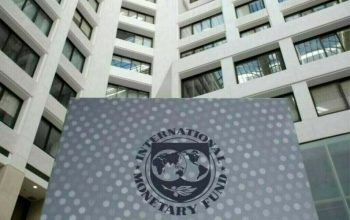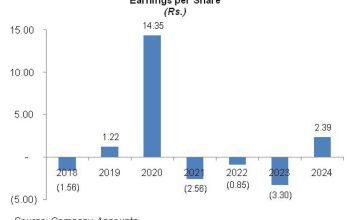The latest indicators of external trade, released by the Pakistan Bureau of Statistics (PBS), show a continuing decline in trade deficit in the first 11 months of FY24, driven by rising exports and decreasing imports.
The trade deficit, reported at $21.7 billion, decreased by 15.3% year-on-year, while exports increased by 10.7% and imports fell by 2.4%.
Exports in May 2024 increased to $2.8 billion, an increase of 27% year-on-year, while imports rose 14% year-on-year. Although imports have decreased cumulatively in the current fiscal year, between February and May 2024 they registered a large recovery as year-on-year growth rate remained positive.
The government imposed restrictions on imports in mid-2022 as the balance of payments crisis worsened, the foreign exchange reserves decreased to alarming levels and imports created pressure on the meagre reserves.
However, as imports were curtailed, the inflationary pressure on the economy continued and increased to record levels. The reversal in imports is likely due to the recommendation of the International Monetary Fund (IMF) that the government eliminates constraints on imports to better aid economic recovery.
As the economy recovers from the slump, Pakistan has also reported its lowest inflation level in more than two years in May 2024. Although the increase in imports may have alleviated supply shortages and improved supply chain linkages, the risk of recurring challenges remains as the accumulation of foreign exchange reserves is limited. The lack of export growth is disconcerting.
There are two major sources of foreign exchange reserves’ accumulation in Pakistan – export revenue and workers’ remittances. Both peaked in FY22, as exports of goods and services surpassed $39.5 billion and remittances surged to more than $31 billion, according to the statistics provided by the State Bank of Pakistan. Imports of goods and services surpassed $84 billion.
However, there was a significant slowdown in FY23 as remittances decreased to less than $29 billion and exports fell below $36 billion, while imports crashed to $61 billion. The current account deficit shrank from $17.5 billion to $3.3 billion.
While exports of goods have recovered this fiscal year, imports of goods have continued to decrease. The current account deficit in the first 10 months of FY24 is $202 million, which is negligible given the deficit levels in recent years.
Constraints on imports may have curtailed the balance of payments crisis by reducing the pressure on the depleting foreign exchange reserves but have created challenges for manufacturers and consumers as they reported significant shortages of essential supplies.
A closer scrutiny of the decreasing trend in imports, particularly in FY23, shows a larger decline in imports of machinery, intermediate goods and raw materials than the consumer goods.
For instance, the largest single non-petroleum product imported into Pakistan, palm oil, exhibited an increase in FY23. While efforts were made to curtail tea imports, the decrease was less than 10% compared to imports of textile machinery, which dropped by more than 57% in FY23.
Pakistan imported more tea and spices than textile machinery and office machinery in FY23. This was not the case in FY22 though, when the latter was more than 1.5 times the former.
Restrictions on imports curtailed imports of capital goods and inputs for productive activities rather than consumer goods. This was reflected in the consequent decline in exports.
The biggest challenge for policymakers today is to boost exports to reduce the pressure on balance of payments. However, a sustainable increase in exports requires policies to improve the productive capabilities of producers in Pakistan, which not only entails better trade facilitation but also ensuring that they are able to invest in the most effective and innovative resources necessary to increase their productive levels.
This dynamism that can boost exports needs a competitive environment with the right set of incentives to enter and exit the industry.
First, to reignite economic activities and increase exports, the policymakers must reduce the constraints on imports of capital goods.
Second, it is imperative to improve the quality of trade facilitation. The introduction of Pakistan Single Window is a major milestone to promote paperless cross-border trade, while the National Compliance Centre set up under the auspices of the Ministry of Commerce needs to play a more conducive role in ensuring that manufacturers comply with international standards to raise the quality of the products produced in Pakistan.
This will help increase the ability of exporters to increase export sales as their products comply with the more stringent standards imposed by a majority of trading partners.
Third, it is important to ensure that consumer awareness of the quality and standards of goods available in Pakistan is also improved. This will discourage the proliferation of low-quality substandard goods.
Finally, agreements on technology transfer must be included in any negotiations which involve joint ventures with foreign companies for setting up manufacturing facilities in Pakistan.
Redundant technologies and manufacturing practices will hurt the ability of manufacturers to sustain export growth, particularly of technology-related consumer goods. The priority must be given to long-term gains rather than short-term incentives.
In essence, Pakistan’s trade is recovering from the slump it experienced in the last two years. However, reforms, a few of which are mentioned above, must accompany this recovery if the growth in exports is to become more sustainable.
The writer is the Assistant Professor of Economics and Research Fellow at CBER, Institute of Business Administration, Karachi
Read the full story at the express tribune website.


